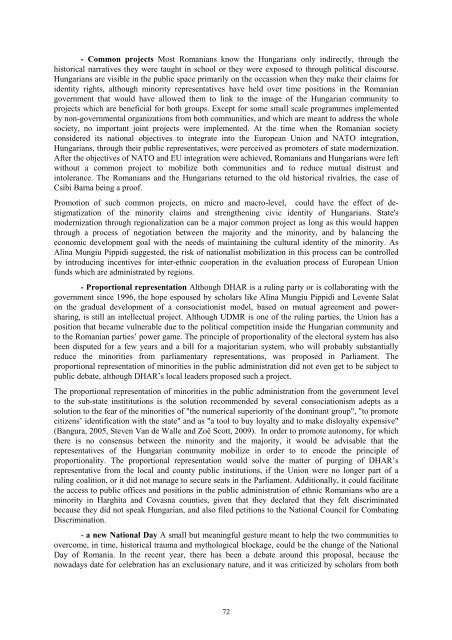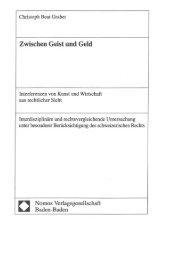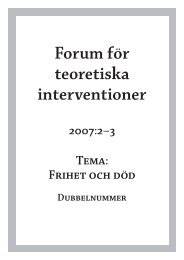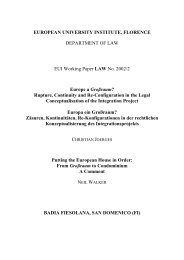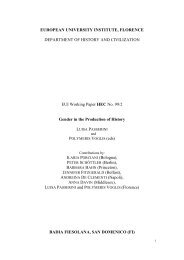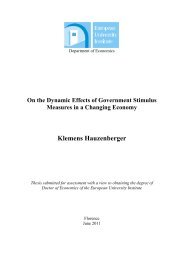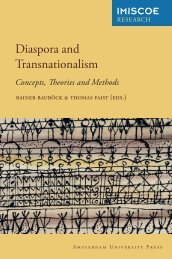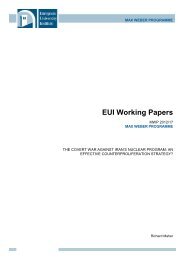Sinziana-Elena Poiana Ioana Lupea Irina-Madalina Doroftei Alina ...
Sinziana-Elena Poiana Ioana Lupea Irina-Madalina Doroftei Alina ...
Sinziana-Elena Poiana Ioana Lupea Irina-Madalina Doroftei Alina ...
You also want an ePaper? Increase the reach of your titles
YUMPU automatically turns print PDFs into web optimized ePapers that Google loves.
- Common projects Most Romanians know the Hungarians only indirectly, through the<br />
historical narratives they were taught in school or they were exposed to through political discourse.<br />
Hungarians are visible in the public space primarily on the occassion when they make their claims for<br />
identity rights, although minority representatives have held over time positions in the Romanian<br />
government that would have allowed them to link to the image of the Hungarian community to<br />
projects which are beneficial for both groups. Except for some small scale programmes implemented<br />
by non-governmental organizations from both communities, and which are meant to address the whole<br />
society, no important joint projects were implemented. At the time when the Romanian society<br />
considered its national objectives to integrate into the European Union and NATO integration,<br />
Hungarians, through their public representatives, were perceived as promoters of state modernization.<br />
After the objectives of NATO and EU integration were achieved, Romanians and Hungarians were left<br />
without a common project to mobilize both communities and to reduce mutual distrust and<br />
intolerance. The Romanians and the Hungarians returned to the old historical rivalries, the case of<br />
Csibi Barna being a proof.<br />
Promotion of such common projects, on micro and macro-level, could have the effect of destigmatization<br />
of the minority claims and strengthening civic identity of Hungarians. State's<br />
modernization through regionalization can be a major common project as long as this would happen<br />
through a process of negotiation between the majority and the minority, and by balancing the<br />
economic development goal with the needs of maintaining the cultural identity of the minority. As<br />
<strong>Alina</strong> Mungiu Pippidi suggested, the risk of nationalist mobilization in this process can be controlled<br />
by introducing incentives for inter-ethnic cooperation in the evaluation process of European Union<br />
funds which are administrated by regions.<br />
- Proportional representation Although DHAR is a ruling party or is collaborating with the<br />
government since 1996, the hope espoused by scholars like <strong>Alina</strong> Mungiu Pippidi and Levente Salat<br />
on the gradual development of a consociationist model, based on mutual agreement and powersharing,<br />
is still an intellectual project. Although UDMR is one of the ruling parties, the Union has a<br />
position that became vulnerable due to the political competition inside the Hungarian community and<br />
to the Romanian parties’ power game. The principle of proportionality of the electoral system has also<br />
been disputed for a few years and a bill for a majoritarian system, who will probably substantially<br />
reduce the minorities from parliamentary representations, was proposed in Parliament. The<br />
proportional representation of minorities in the public administration did not even get to be subject to<br />
public debate, although DHAR’s local leaders proposed such a project.<br />
The proportional representation of minorities in the public administration from the government level<br />
to the sub-state instititutions is the solution recommended by several consociationism adepts as a<br />
solution to the fear of the minorities of "the numerical superiority of the dominant group", "to promote<br />
citizens’ identification with the state" and as "a tool to buy loyalty and to make disloyalty expensive"<br />
(Bangura, 2005, Steven Van de Walle and Zoë Scott, 2009). In order to promote autonomy, for which<br />
there is no consensus between the minority and the majority, it would be advisable that the<br />
representatives of the Hungarian community mobilize in order to to encode the principle of<br />
proportionality. The proportional representation would solve the matter of purging of DHAR’s<br />
representative from the local and county public institutions, if the Union were no longer part of a<br />
ruling coalition, or it did not manage to secure seats in the Parliament. Additionally, it could facilitate<br />
the access to public offices and positions in the public administration of ethnic Romanians who are a<br />
minority in Harghita and Covasna counties, given that they declared that they felt discriminated<br />
because they did not speak Hungarian, and also filed petitions to the National Council for Combating<br />
Discrimination.<br />
- a new National Day A small but meaningful gesture meant to help the two communities to<br />
overcome, in time, historical trauma and mythological blockage, could be the change of the National<br />
Day of Romania. In the recent year, there has been a debate around this proposal, because the<br />
nowadays date for celebration has an exclusionary nature, and it was criticized by scholars from both<br />
72


